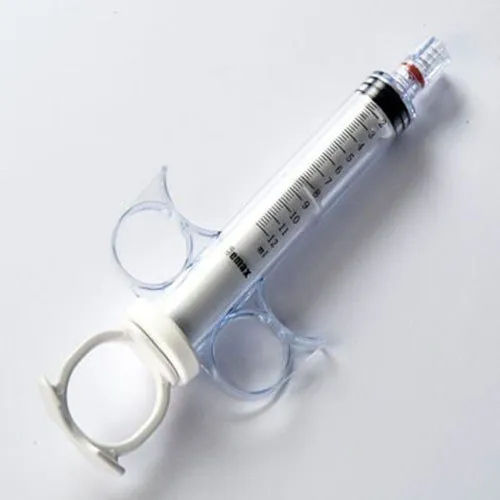Control Syringe
Product Details:
- Needle Material Stainless Steel
- Usage Hospital, Clinic
- Sterilized Yes
- Disposable Yes
- Click to View more
Control Syringe Price And Quantity
- 50 Piece
- 150 INR/Piece
Control Syringe Product Specifications
- Stainless Steel
- Yes
- Yes
- Hospital, Clinic
Control Syringe Trade Information
- 10000 Piece Per Week
- 4 Days
Product Description
12 ml Control Syringe is intended to come in use for the intra arterial or intravenous administration of radiographic media that concentrate the media. These can also be used to inject fluid into or to withdraw fluids from the body. 12 ml Control Syringe allows doctors to generate more pressure with less applied forces which results in improving visualization with less contrast. It also increases the flow through smaller french size catheters and decreases hand fatigue. 12 ml control syringe is a little, light-weight syringe used to regulate the flow of liquids. A little needle from the syringe is introduced into the body, and a plunger is then used to extract fluid into the container.
Product details
|
Disposable |
Yes |
|
Maximum Capacity |
12 ml |
|
Usage/Application |
Hospital, Clinic |
|
Body Material |
Plastic |
|
Is It Sterilized |
Sterilized |
Frequently Asked Questions
Q: A control syringe is what?
A: A control syringe is a tool used to precisely measure and administer small volumes of fluid. It is also referred to as a medical syringe or a syringe pump. It is made up of a barrel, a plunger, and a connection or needle for tubing attachment. The control syringe is appropriate for a variety of medical procedures and applications because it allows for precise control over the pace and volume of fluid supply.
Q: A 12 ml control syringe can store how much fluid?
A: A 12 ml control syringe may hold a maximum amount of fluid equal to 12 millilitres (or cubic centimetres), as the name says. This indicates that it can measure and deliver quantities up to 12 ml correctly.
Q: The way a control syringe functions?
A: A plunger that moves inside a cylindrical barrel is how a control syringe works. To change the direction of the fluid flow, the plunger is pushed or pulled. The barrel is calibrated with markings to show the volume of fluid being delivered; these marks are typically in millilitres. The user may accurately measure and deliver the required volume of liquid by manipulating the plunger's location and movement.
Q: A 12 ml control syringe may be used again?
A: Due to the risk of contamination and infection, it is typically not advised to reuse syringes in sterile or medical settings. Syringes that are single-use and disposable are frequently used to maintain hygienic standards. Reusing syringes raises the risk of cross-contamination and endangers the patient's health.
Q: Do several kinds of control syringes exist?
A: Yes, numerous control syringe types are offered to meet different needs and applications. Infusion syringes with built-in flow control mechanisms, electronic syringe pumps, and manual control syringes are a few examples of prevalent varieties. These devices may have a variety of functions, such as programmable settings, adjustable flow rates, or compatibility with particular medical procedures.



